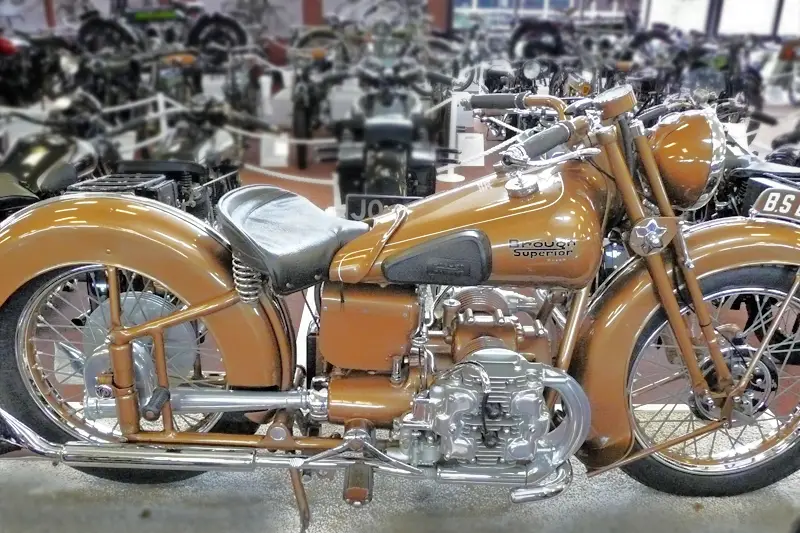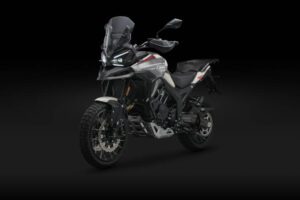How to store and protect your motorcycle

Correctly protecting and storing your motorcycle is key to ensuring your bike is in working order, whenever you next use it.
Failure to adequately look after a mechanical device can have terrible, and often financially crippling, implications. This can cause real heartache to any rider. How you store your bike depends on the time of year and the age and value of your bike.
If it’s a classic, you may want to go to extra lengths to ensure its safety. Let’s take a look at how best to store your motorcycle.
Where to store a motorcycle for a long time
You’ve invested time and money into your motorcycle, so one of the most pressing questions is where you should store your bike? Which is better: indoor or outdoor storage?
Storing a motorcycle in a garage
This is the best option, as it’ll not only help to prevent your motorcycle from being stolen, but it’ll also protect your bike from the elements. Storing in a garage is the most secure option as you can control parts of the environment and easily lock your garage door.
It’s also advisable to cover your bike when storing it in a garage to protect it from dirt, dust and other elements such as damp. If your garage has windows, a cover will protect the paintwork from sunlight too.
How to store a motorcycle without a garage
Storing bikes outside isn’t the best option as it’ll expose your motorcycle to the elements, which can cause rust and corrosion. If you don’t have motorcycle garage storage, there are a number of other motorbike storage solutions you can try.
For instance, if you have access to a back garden, it might be a good idea to build a storage shed or outpost for them. Another good option is to rent bike storage.
This is particularly important in the winter months as otherwise, your bikes will be exposed to rain and moisture, which – for any mechanical vehicle – wreaks havoc on parts.
If storing your bike outside is the only option, a motorcycle cover can help protect it from the rain and even the sunshine.
How to prepare a motorcycle for long-term storage
An incorrectly stored bike is more susceptible to faults, increasing the chances that when you choose to ride again, instead of a glorious roar of an engine, you simply get a symphony of silence. Or, worse still, you end up losing money instead of making it.
How to protect a motorcycle from rust

This is a hard battle to win: not only are you taking on unscrupulous characters who may wish to steal your assorted pride and joys, mother nature herself is against you as forces such as rust, corrosion and humidity can all play their part in tarnishing your machine.
But protect them you must, so it is time to consider their physical wellbeing.
If your bike isn’t going to move for a while, you need to complete a few extra stages after you clean them. Everyone has their own tips for motorcycle storage, but here is what we have found works the best.
Use a penetrating oil (e.g. WD-40) or a rust-proofing spray to give the bike’s engine and metal parts a good covering. This helps prevent rust and ensures there is no trapped water.
While the drive chain is already lubed, squirt a bit of oil on a rag and wipe both sides of the drive chain’s links as these are really susceptible to rust.
How to protect your motorcycle’s battery

If you leave your motorcycle unused for months on end, it’s important you care for the batteries to prevent them from dying. Every time a battery is left to lose its charge completely, this causes permanent battery damage and can prevent the battery from charging fully as a result.
If your bike hasn’t already got one, fit a battery charging plug-in point so you can easily keep the battery topped up. It’s a good idea to put your motorcycles on a battery charger, such as a trickle charger, tender, or conditioner.
These can extend the life of a battery and should ensure the bikes are ready to go when the weather outside improves. Whilst trickle chargers are often the cheapest option, some consider them ineffective and sometimes even bad for your motorcycle as they don’t have built-in protection against overcharging the battery.
In this case, battery tenders are a better option as they are able to gauge when a battery needs charging and when it’s fully charged. This means you can keep the battery connected to the tender for as long as you need, meaning you can comfortably keep some bikes in storage for months, or even years.
Of course, if you don’t want to invest in motorcycle battery chargers, you can simply charge the battery every few weeks rather than leaving it on a constant drip.
How to protect your motorcycle’s tyres

When storing your motorbike over long periods, you should over-inflate the tyres. The air will leak out of a tyre over time and over-inflating them by about 20psi when storing a bike helps to prevent damage to the tyre carcass, which is the part of the tyre that sustains load and absorbs shock.
It’s usually best to check your tyres every month or so when your motorcycles are in storage as you might need to inflate them regularly to prevent flat spots. Be sure to put a note on the bike reminding you to check and return the pressures to the correct values before you ride it again.
If you’re going to store your bike in the garage, you should ideally keep the wheels off the ground, as this will prevent your tyres getting flat spotted. You can achieve this by using paddock stands, or if you can’t get your hands on these, park your bike on carpet so the tyres aren’t in direct contact with the cold concrete floor.
If you’re working with limited paddock stands or carpet space, try to rotate your motorcycle every month.
How to protect your motorcycle’s petrol tank

There is much debate over whether you should store your bike with a full or empty petrol tank. Some argue a full tank helps prevent rust from forming within the tank, while others say an empty tank is a better solution as fuel can go bad, which can damage the tank. However, when all is said and done, it’s really a moot point.
Whichever way you go, on a bike with carbs, it is a good idea to drain the carbs of fuel to prevent them from gumming up, which can be done via the carb drain plugs. Or if you’re lazy, just turn the fuel taps off and run the engine until it uses all the fuel up. Please note that if you do this, run the motor before you apply the rust-proofing spray or the heat will burn it off.
What to do with your motorcycle’s oil when storing your bike for a long time

Another area of debate is the oil within a bike’s motor. Old oil is mildly corrosive due to engine contaminants within it, so some owners swap the old oil and service the bike before putting it into storage. Following this method depends on how dedicated you are, and when you plan on running the bike again.
Pest control

There are plenty of images on the internet of mice making homes in motorcycle air boxes, but in reality, these are rare occurrences. Don’t shove a rag in the airbox to block its entrance as this just gives the mouse a bit of extra bedding!
If you want to block it, cut out some plastic shapes and use small amounts of tape to hold them in place. Mice can eat foam seats, but again this is rare on a garaged bike. If you are worried, a mousetrap is the best solution.
How to keep your motorcycle safe in storage
The last thing you want after putting so much effort into storing your bike correctly is for it to get stolen. After ensuring all your bikes are adequately protected by the right insurance policy, it’s time to think about how to deter potential thieves.
Motorcycle locks, cameras and trackers

As well as ensuring your garage is secure via locks (it goes without saying, but don’t leave the ignition key in the bike!), use a security-approved chain and ground anchor to fix your bike to the floor, and ensure you don’t leave any power tools such as grinders in the same location.
The key is to make it as tricky as possible for a thief, so the more locks the better. Thanks to the low cost of modern electronic technology, you can easily get a camera surveillance system for under £150 that feeds back data to your smartphone for peace of mind.
The ultimate in security is a motorcycle tracking system; these have a tremendously successful recovery rate after a vehicle is stolen. However, you will need to sign up for a subscription monitoring service. Thankfully, insurance companies like us often offer a discount that helps off-set this cost.
Classic bikes are far more likely to get stolen when away from home. Read our motorbike security guide for more tips.
How to store your bike over winter
While you should take all the previous advice on board, there are specific factors to consider when storing your bike during the colder months.
Coverage
Even in a well-ventilated garage, condensation can be an issue. This is why it’s often best not to cover a bike when the temperature outside drops.
In warmer weather, a breathable cover helps keep the bike dust-free so is a great addition, but when the temperature starts to get really cold, condensation can form on metal parts and a cover will trap the condensation. Trapped water leads to corrosion, even in the cold.
Preventing condensation is tricky. The best way is to have a dehumidifier in the garage and even a small freestanding oil-filled heater, but these can be expensive to run as they use electricity.
If you are on a budget, motorcycle dry storage kits are an option. These are effectively large plastic bags with water-absorbing packets that cocoon bikes and keep them in a hermetically sealed state. They are extremely effective and very cheap if you only have a few bikes as they’re about £40 each. However, getting the bike into the bag can be a bit of a struggle and, once in, it’s not easy to gain access to it.
Do I start my motorcycle’s engine when in storage?
With your bike all tucked up, the biggest quandary is whether to break it out of storage to run the motors. Again, this is where opinions differ.
Running the engine
Engines like being run; it flows the oil around their internals and prevents seals from perishing. Circulating coolant around the bike also helps prevent internal corrosion. Getting a motor up to its working temperature regularly is certainly good for it, but do you need to keep dragging your collection out of hibernation to start their motors?
While long periods of inactivity are bad for engines, leaving a motor inactive for a few months isn’t going to harm it that much.
Seasonal running
As a general rule, when the weather is cold it is generally best not to start the engine as a warm motor will attract condensation as it cools off. Some engines will turn over without starting, either on the kickstart or the starter motor, and it’s not a bad idea to do this when it is cold outside.
How often should you start your motorcycle?
If the weather outside is good, open your garage door and run the motor every few weeks, allowing it to reach operating temperature and stay there for a while. Some say as soon as the radiator fan kicks in that’s enough, but again, it’s up to you.
Two-stroke vs four-stroke
Four-stroke engines tend to be less affected by inactivity than two-strokes, which often suffer from damaged seals, so if you have strokers, give them a good run regularly. Always remember to remove any blockages you may have installed and also to check the cover is clear of the exhaust before you start a bike up.
Once the bike has cooled off, squirt a bit of anti-corrosion spray over the motor to replace any that has burnt off and read the bike a comforting bedtime story about its former glories to allow it to drop back into hibernation again.
How to store a classic motorcycle
If you have a classic bike, you may need to store it differently. Classic bikes are older and more fragile, and therefore need additional care. Not only that, but classic vehicles are often high-value and you’ll want to ensure their safety.
How to care for a classic motorcycle

Now that your bike is prepared for storage, let’s turn to how you can clean your bike so it remains in good condition.
We all know how to clean a bike, but classics do require an extra level of care that a modern machine does not.
Washing a classic involves time and effort on the owner’s behalf and certainly not a powerful jet wash. The finish on older machines can already be worn, and a jet wash will often get under any loose paint or flaking metal. This will not only remove the loose paint, but it could also potentially cause more damage.
Using a low-powered hose, give the bike a pre-wash to get it nice and damp and then use a good quality, soapy cleaning agent to gently agitate the dirt. Clean the bike using a soft-haired brush and sponge.
A good tip here is to have two sets of buckets and sponges, keeping one for the sensitive plastics and the other for the gritty areas such as the wheels, to prevent any grit potentially scratching the plastics or paint.
Once clean, wash the bike over again with clean water and leave it to dry. To speed up the drying process, you can use a chamois or an airline and compressor to blow away a bit of the excess water. This is a good idea for bikes with spoke wheels as water can get trapped where the spokes meet the rims, which can cause rust spots if left alone.
When dry, spend a few minutes carefully looking over the bike for loose bits. Old machines do tend to shed various parts such as rubbers and the occasional nut or plastic panel. On classics, replacing these parts can be both tricky and expensive, so look for any bits that are wobbly.
This is also a good time to check for any mechanical issues, such as oil leaks, worn tyres or a loose drive chain.
Protecting your motorcycle for storage
Motorcycle corrosion protection
Corrosion is your biggest enemy and the only way to prevent this is to put some hard work in. There are various anti-corrosion products on the market, such as ACF-50 or Scottoiler FS 365, and spraying some on a dry cloth and then wiping it on exposed metal parts works wonders.
Take your time and, if you can, remove any panels or the fairing to get right to the heart of the bike to protect it. And don’t be afraid to be liberal with the anti-corrosion protection – it’s better to be safe than sorry.
Pay particular attention to areas such as the suspension linkages as these are in the direct line of fire when it comes to road grime.
How to lubricate your motorbike

Once finished, use lubricating oil to lubricate moving parts or joints, such as:
the footpegs,
gear linkages,
ignition,
key barrels,
and the sidestand pivot.
Where possible, move the part to work the lubrication in, and always wipe off any excess oil. It goes without saying, but avoid contaminating the brake discs or callipers with any lubricants or polishes.
If you encounter any old oil or chain lube residue that has avoided the washing process, use an old rag and some degreaser to get it off instead of just ignoring it.
Wax and polish
Give the chain a lube, check the tyre pressures and once you’ve got all the dirty work finished, wash your hands and give it a good polish using a dedicated motorcycle polish.
Try to avoid spraying a household polish on a bike as often it can be too aggressive. Abrasive polishes such as T-Cut are best used sparingly as they actually cut through surface oxidation and corrosion to cover scratches and restore colour. Old bikes often don’t have much paint left to be cut through.
A good quality wax should not only make the bike look its best, but also protect its paintwork. Your bike should now look fantastic and be protected!
Motorcycle insurance you can trust
Bikesure provides affordable, specialist motorcycle insurance for riders, no matter which motorbike you ride, we’ve got a policy to suit you. Call 0333 554 2279 for a quick and easy quote or book a callback at a time that suits you.







